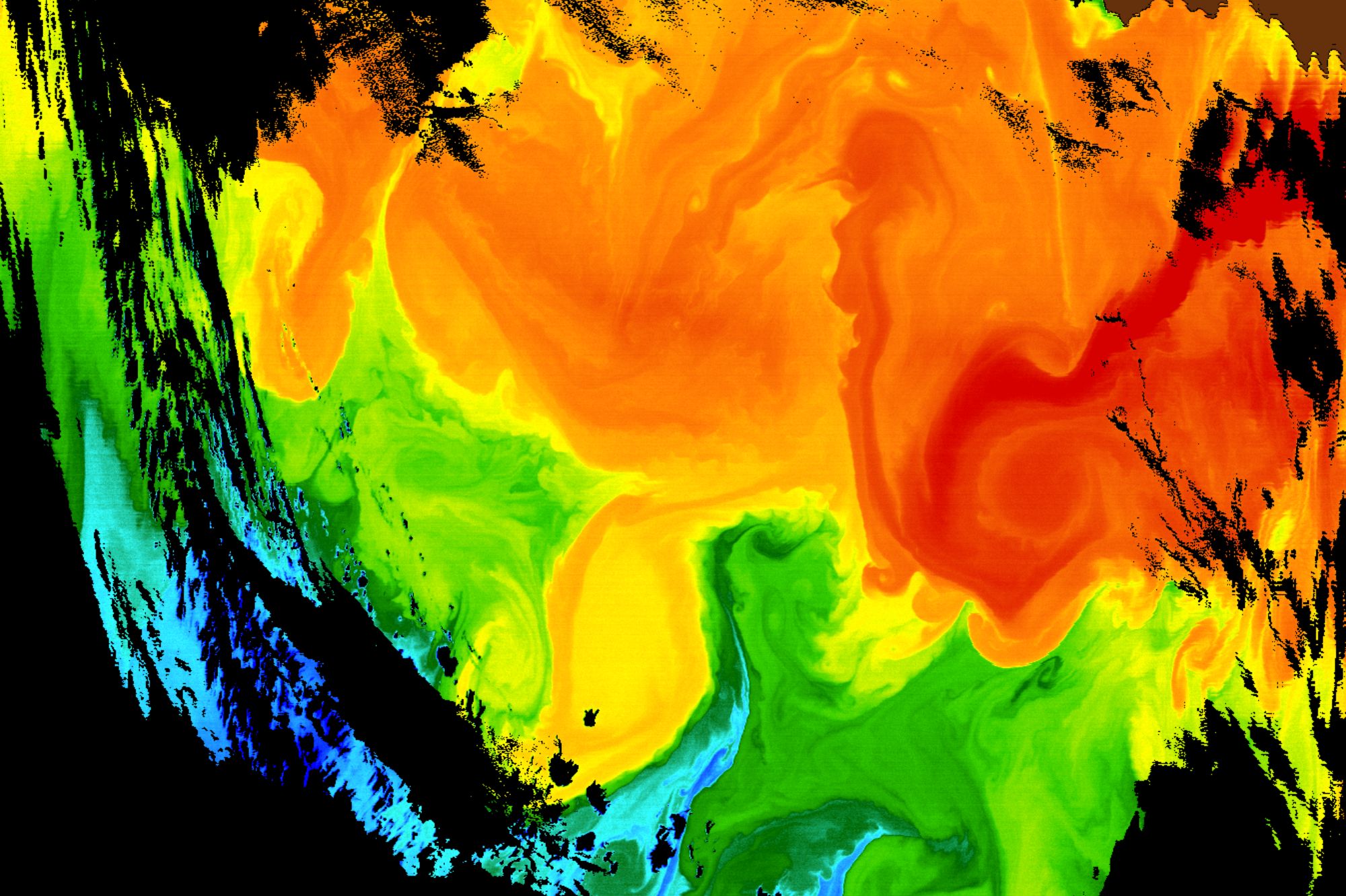Story
How eddies enhance the absorption of carbon: a South Atlantic Ocean study
9 May 2023

Above: Satellite image of the sea surface temperature of an Agulhas ring, with the Agulhas current forming a secondary ring. This region is located at the southern tip of South Africa, south of Cape Town. (MODIS Aqua sea surface temperature data used to produce this image were retrieved from the NASA ocean colour website; https://oceancolor.gsfc.nasa.gov/) The orange circle filled with yellow to the bottom left is the eddy, the dark red "stream" going from right to left then turning back on itself is the Agulhas current forming another eddy.
Mesoscale eddies enhance the air-sea CO2 sink in the South Atlantic Ocean, a new study has found.
The study - led by scientists at Plymouth Marine Laboratory and joined by scientists from the University of Exeter and the Federal University of Rio Grande - involved using satellite and in situ observations to estimate the cumulative CO2 flux of long-lived mesoscale eddies in the South Atlantic Ocean.
What are mesoscale eddies?
Ocean mesoscale eddies can form when part of a main current becomes separated or through internal ocean instabilities which form circular rotating currents that propagate across the oceans. These eddies can last from weeks to years, and can modify the ocean properties of the water captured within them, which in turn affects the net exchange of carbon between this water and the atmosphere.
The team from PML included Dr Daniel Ford (now at the University of Exeter), Dr Gavin Tilstone, Dr Vassilis Kitidis and Honorary Fellow Dr Giorgio Dall’Olmo.
Dr Daniel Ford, recently completed his PhD at PML and the University of Exeter, and lead author of the study, said:
“Mesoscale eddies are abundant in the global oceans and known to affect oceanic and atmospheric conditions, however little is known about how these eddies modify the absorption of carbon across the global ocean; what is generally referred to as the global ‘ocean carbon sink’.”
“This study is therefore important for scientists to gain the ‘bigger picture’ of the air-sea CO2 flux from eddies. In other words, to be able to quantify just how much eddies may contribute to the absorption of carbon from the atmosphere to the ocean, and how this might change over their lifetimes.”
The study involved using satellite-based observations and in situ observations, plus Lagrangian tracking (the process of determining trajectories of particles or features) to estimate the air-sea CO2 flux of 67 long-lived mesoscale eddies across the South Atlantic Ocean, over a 16-year period.
.gif)
Above: The Agulhas (red) and Benguela eddies (blue) studied travelling across the South Atlantic Ocean, from 2002 to 2018.
It was found that anticyclonic eddies originating from the Agulhas retroflection, and cyclonic eddies originating from the Benguela upwelling, act as net CO2 sinks over their lifetimes. In combination, the eddies significantly enhanced the CO2 sink into the South Atlantic Ocean by 0.08 ± 0.04%.
Dr Daniel Ford continued:
“Although this modification appears small, the long-lived eddies studied are only a small proportion of eddies in the South Atlantic Ocean; it therefore highlights the need to include eddies when assessing ocean carbon budgets.”
Dr Gavin Tilstone, Bio-optical Oceanographer at PML added:
“This is a really exciting milestone in our understanding of the global ocean sink. Our study has shown that eddies in the South Atlantic Ocean enhance the absorption of carbon from the atmosphere, strengthening the ocean to be a stronger net sink of carbon. Our results highlight the need to include the impact of carbon uptake by eddies in models to more accurately assess ocean carbon budgets.”
Report: ‘Mesoscale eddies enhance the air-sea CO2 sink in the South Atlantic Ocean’
You can access the full report here >>